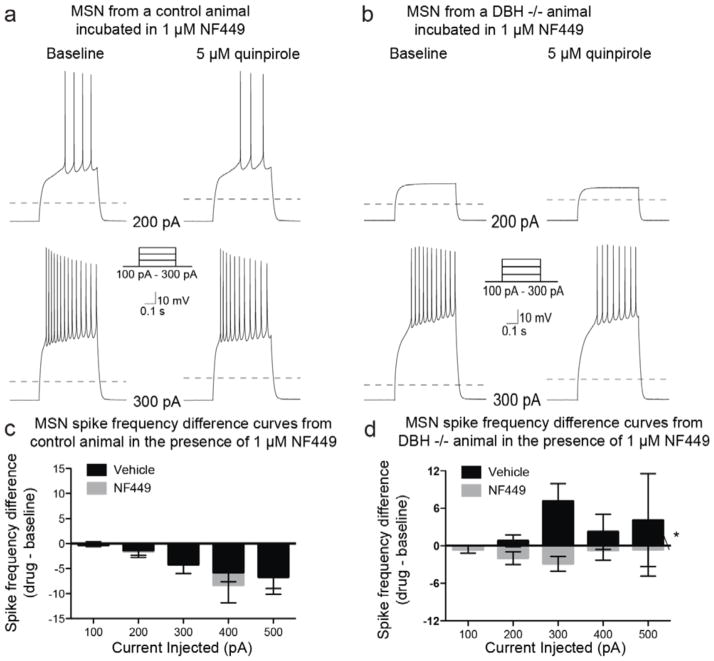Figure 6. Gαs inhibition has no effect on quinpirole-mediated inhibition in control mice, but restores quinpirole-mediated inhibition of MSN spike frequency in Dbh −/− mice.
Example traces from MSNs recorded from a control (a) and a Dbh −/− (b) animal at baseline or following bath application of quinpirole (5 μM) with the Gαs inhibitor, NF449 (10 μM; slices pre-incubated in the Gαs antagonist for 1 h prior to recording, and then continuously exposed to NF449 throughout the recording process), while action potentials were evoked with a series of current steps. Dashed line indicates −70 mV. (c) Population data (mean ± SEM) showing the effects of D2-like receptor activation on evoked spike frequency differences (quinpirole – baseline) in the presence of vehicle (n = 46) or NF449 (n = 11) from cells recorded from control mice. (d) Population data (mean ± SEM) showing the effects of D2-like receptor activation on evoked spike frequency differences (quinpirole – baseline) in the presence of vehicle (n = 15) or NF449 (n = 22) from cells recorded from Dbh −/− mice. * indicates significant difference (p < 0.05) between vehicle and NF449 population data.

